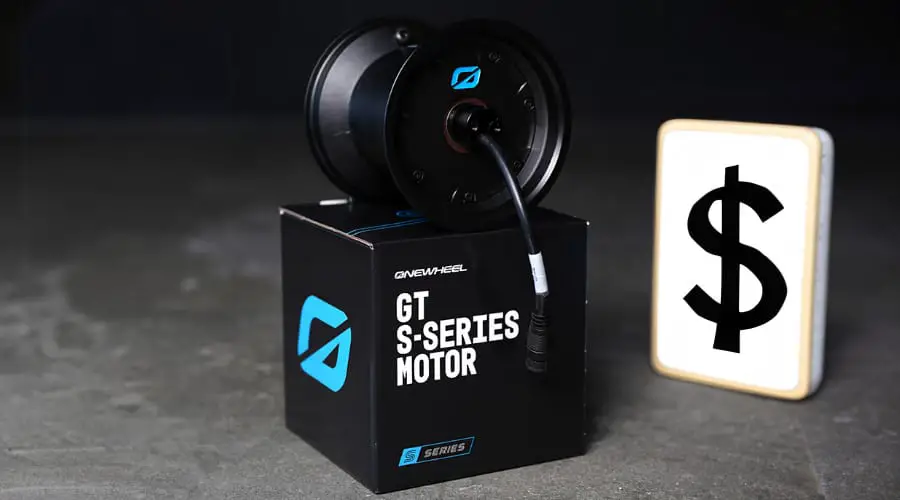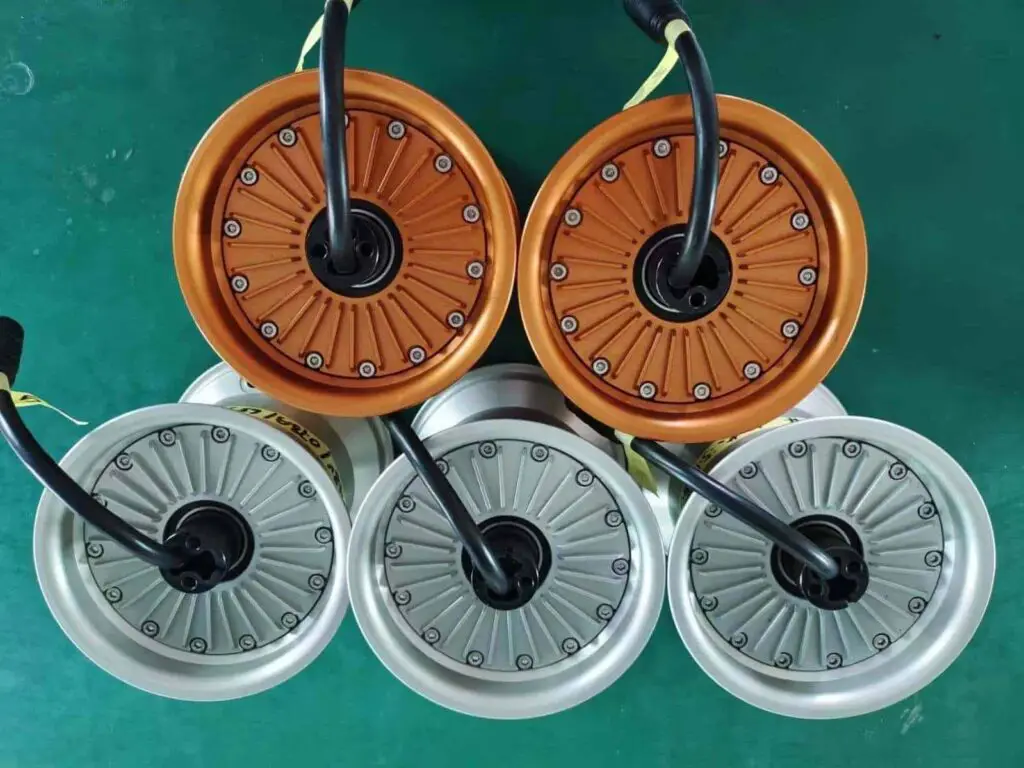
In a recent episode of the Onewheel podcast, Future Motion’s founder and CEO, Kyle Doerksen, shed light on some exciting developments in the world of Onewheel. Among these is the introduction of a full motor replacement option for Onewheel boards. This move not only marks a significant step in enhancing the modularity of Onewheel boards but also aligns with the ‘Right to Repair’ movement, empowering riders with more autonomy over their boards.
The New Era of Onewheel: Modular and Repairable
Could this be the beginning of more parts to come from Future Motion? Will we see BMS, controllers and batteries that can be sent to consumers at a reasonable price? The conversation with Kyle Doerksen highlighted Future Motion’s focus on modular level repair of Onewheel boards. This approach is a game-changer, allowing riders to undertake more extensive repairs and upgrades themselves, which was previously a challenging endeavor.
We can hate and have the “FFM” mindset continue but they are moving towards the right directions and for the sake of more riders joining the sport, I see this as all positive vibes. I think most will see this as a positive thing. The ability for riders to replace their motors not only enhances the longevity of their Onewheel boards but also aligns with the growing global emphasis on consumer rights and sustainability. This initiative by Future Motion is a commendable step in acknowledging the importance of user empowerment in maintenance and repair.
Technical Insights and Concerns
The technical community has raised valid points about the compatibility and performance implications of motor replacement. While the new motor offers a torque boost and potentially better thermal performance, it’s clear that the full benefits of the GTS upgrade, such as higher voltage battery advantages, can’t be fully realized without a complete system upgrade. This highlights a crucial aspect of technological advancements: the interdependence of components and the complexity of upgrades.
The intent of this motor is obviously not to make a GT perform to the same degree as a GT-S but to have the ability to at least purchase a motor that isn’t second hand like many within the community have been doing for years when their motor goes.
This will be a complete replacement however. Stator / motor, hub, tire and bearings. Just do not expect to get GTS performance from a GT board.
Criticism and Constructive Feedback
Let’s dive into some important topics for Future Motion: pricing, tire size options, and how they stack up against third-party products like those from TechRails. These areas are crucial for Future Motion to focus on, as they directly impact what their users expect and need. One key issue is their pricing strategy. It seems the current prices might be high enough to discourage many potential buyers. People might end up either relying on Future Motion for the service and repairs, looking for secondhand or aftermarket motors, or even opting out altogether.
Now, about tire sizes. There’s a growing demand for 6″ and even 5″ tires from aftermarket companies. It makes sense for Future Motion to consider offering a variety of hub sizes. Their shift to a 6.5″ hub was not well received from many riders (due to the smaller side wall and stiffer ride). While producing a 5″ hub might be a bit of a stretch for them, accommodating a 6″ hub, which was the standard on their earlier flagship boards, should be doable without much extra effort. Smaller hubs allow for tires with higher sidewalls, leading to a smoother and more enjoyable ride. This could be a smart move for Future Motion to meet rider preferences and stay competitive.
Third Party Motors Such as TechRails Revolver Hub Motor Assembly

TechRails is in the process of building the first five prototypes of the Revolver which is a new motor product that would compete with an OEM replacement. Techrails is working on testing currently and it is expected to be available in early Spring of 2024.
These are also compete motor replacements however they are higher quality. Expect to have:
- Significant improvements in no-load current and efficiency.
- Billet hub
- 3mm axle (thicker axle wall) with a curved profile O-Ring groove to eliminate stress risers.
- Different laminations holding more copper (IIRC there is 15% more copper). This typically nets better efficiency.
- No Air-Core design – Hyper-Core motors use a patented Air-Core system of voids between lamination stack and axle for air movement.
- Lamination stack is pinned (keyed) to the axle, not cryogenic (thermally) press-fit.
- Revolver stator will weigh more than stock. Every aspect of it is heavier. But, this added weight has a performance or durability reason. The billet hub is lighter than the 6.5 inch stock wheel but remaining components will be heavier.
TechRails is projecting to have a competitive cost of $1000-$1100 so for an additional $150-$200 you are paying for a higher quality (more copper, thicker axle wall, billet hub). Motors such as this will be something to consider when deciding to purchase a stock replacement or aftermarket.
The Right to Repair Movement: A Catalyst for Change
Future Motion’s decision to allow motor replacements is indeed a step in the right direction. However, it also opens up a conversation about the balance between innovation, performance, and user accessibility. As technology evolves, so do the expectations and capabilities of users. Companies must navigate these waters carefully, ensuring that they continue to innovate while also catering to the practical and financial realities of their customers.
Empowering Riders: By making Onewheel boards more modular, Future Motion is handing power back to the riders. This move is a significant nod to the ‘Right to Repair’ movement, advocating for consumers’ ability to repair and modify their own devices.
Innovation and Community Feedback: The podcast also touched on how Future Motion values feedback from its pro team and community. This collaborative approach ensures that innovations like the new motor assembly are in line with what riders want and need.
Enhanced Longevity and Customization: With the ability to replace and repair major components like the motor, riders can extend the lifespan of their boards and customize them to their liking. This not only saves money in the long run but also enhances the overall riding experience.
Supporting Sustainable Practices: Modular repairs mean less waste and more sustainable practices within the Onewheel community. Instead of discarding a board due to a single malfunctioning part, riders can now replace and repair, reducing environmental impact.
A Step Towards Greater Autonomy: This development is a big win for riders who have long sought more control over their boards. It represents a shift in the industry, recognizing the importance of empowering users to maintain and repair their own equipment.
Conclusion
Future Motion’s introduction of a full motor replacement option for Onewheel boards is more than just a technical upgrade; it’s a move saying to riders that Onewheel parts can be replaced by the consumer. We still don’t have all parts available such as a controller or BMS. Perhaps these will come eventually? Time will tell. Lets just hope that we continue this trend into all parts.
